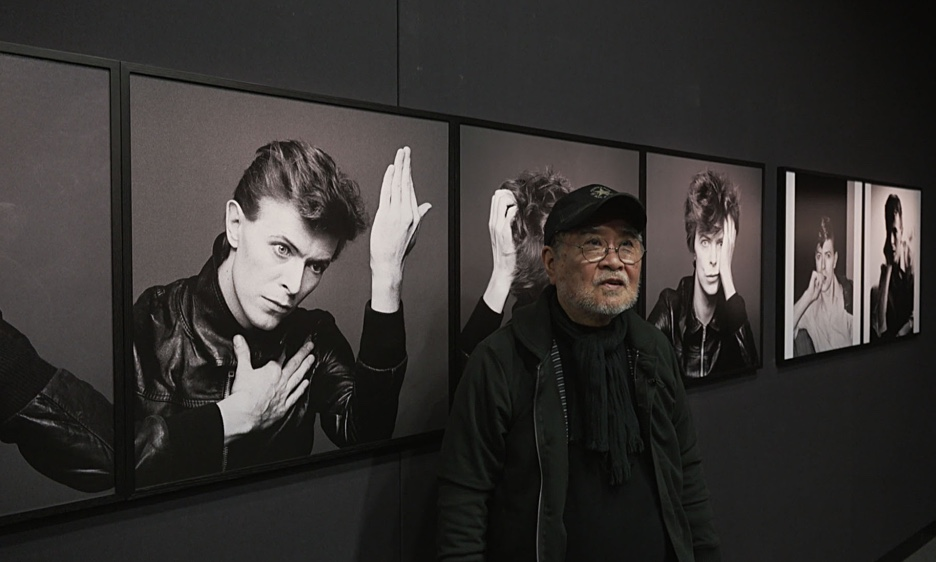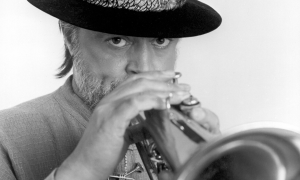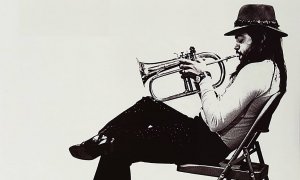Home » Jazz Articles » Catching Up With » Masayoshi Sukita: A Higher Place
Masayoshi Sukita: A Higher Place

Courtesy Masayoshi Sukita
Sometimes good portraits or photos on album jackets push the artists up to a higher place and vice versa
—Masayoshi Sukita, photographer
In 1970, he started working as a freelancer and went to New York where he was fascinated by the Andy Warhol subculture. But Sukita's destiny was forever changed when he traveled to London in 1972 where first met and photographed Marc Bolan and T Rex. He then met David Bowie. Before even having heard his music, Sukita saw a concert poster of Bowie during the Ziggy Stardust period and felt compelled to go. He was astonished by Bowie's innovative performance style and arranged a photo session with him which started a working relationship that would last 40 years. He is the author of the iconic Bowie portrait that adorns the Heroes (RCA, 1977) album cover. Since then, Sukita has become a legend himself, shooting a who's who of rock, punk, and pop icons both in the East and West and capturing the images of stars right as they became part of the pop firmament.
His book Eternity highlights his best work and collects over 200 of his photographs across 50 years, including unforgettable images of David Bowie, Iggy Pop, Marc Bolan, Yellow Magic Orchestra, Ron Carter, to name but a few, but also photographs from various film sets, travels, and many more. Eternity is a gorgeous visual celebration for music and photography fans.
. All About Jazz: What sort of a story do you feel the book Eternity tells? Please tell me how you approached the content in this book and how it was structured.
Masayoshi Sukita:I was thinking to make a retrospective photo book of myself, then Iconic Images which is working with Terry O'Neil, etc approached me to make that kind of book—it was the perfect timing for me. The Covid lockdown worked well for me, I could have enough time to select photos and think about the book. I'm very satisfied with the book because it shows people many types of photos of mine, not only Bowie.
AAJ: You've covered different areas of photography from fashion to music, from film sets to travel photography. Is curiosity maybe a photographer's most important trait?
MS: Absolutely. I've been curious about things such as music, movies, or even sceneries that attracted me since I got my first camera. Eternity shows everything.
AAJ: How would you explain the powerful connection between music and photography?
MS: I think they have a sort of "multiplier effect" on each other. Sometimes good portraits or photos on album jackets push the artists up to a higher place and vice versa. I hope Heroes is one of the examples.
AAJ: What do you look for when searching for your portrait photo personality?
MS: I am trying to get even with the object. I mean, I don't order poses to the objects as far as possible and ask the person for spontaneous actions sometimes. Of course, it depends. In Bowie's case, my method worked almost perfectly.
AAJ: You worked with Bowie for 40 years. What was it about David Bowie that made him a good photo subject for you?
MS: I intuitively felt something at the first photo session... I didn't see what it was, but I felt the impact.
AAJ: Was there any awareness at the time while you were working together that many of the images taken during various times will have such significance many years later?
MS: There were. Especially the session of Heroes, though it was just my private shoot—it was not for record jacket or promotions.
AAJ: The cover photo of the Heroes, album is truly iconic. The book provides a look at many of the photographs from the session that produced the image. Can you tell me about the session's background? What was it that he was trying to achieve during that session?
MS: He visited Japan with Iggy Pop to promote his new album The Idiot (RCA, 1977). This time because he had produced the album. I heard their schedules were not very tight because it wasn't a tour, so I asked him and Iggy to have a photo session. He just requested Yacco who is a coordinator to get him some leather jackets for that. The sessions were held for 1 hour with each—Bowie & Iggy—and they looked very relaxed, also it was just like life. After the sessions, I selected and printed some of the best ones and sent him the prints. Some days later he told me he would love to use one for the sleeve of his new album Heroes, I was very honored and pleased with it!
Tags
PREVIOUS / NEXT
Support All About Jazz
 All About Jazz has been a pillar of jazz since 1995, championing it as an art form and, more importantly, supporting the musicians who make it. Our enduring commitment has made "AAJ" one of the most culturally important websites of its kind, read by hundreds of thousands of fans, musicians and industry figures every month.
All About Jazz has been a pillar of jazz since 1995, championing it as an art form and, more importantly, supporting the musicians who make it. Our enduring commitment has made "AAJ" one of the most culturally important websites of its kind, read by hundreds of thousands of fans, musicians and industry figures every month.
























